“The best time to plant a tree is twenty years ago. The second best time is now.” — Chinese Proverb
The growing number of companies making net-zero carbon commitments offers a ray of hope for progress on climate change.
Currently around ~33% of world’s largest companies and more than ~50% of countries have pledged to reach net-zero at dates varying mostly between 2030 and 2050. [1]https://www.businesswire.com/news/home/20210920005357/en/The-Climate-Pledge-Announces-86-New-Signatories [2] https://www.bbc.com/news/science-environment-58874518
More commitments will almost certainly follow — as one company moves, others in the industry feel pressure to follow — either to avoid being seen as a sustainability laggard, to fend off regulatory requirements that might be more stringent, or to build advantage in a shifting competitive landscape. A single company with the courage to set ambitious targets can ratchet up the efforts of an entire industry, while seizing early advantage. As of October 2021, virtually all of the world’s airlines have pledged to reach “net-zero” by 2050, having previously promised only a 50% net reduction in emissions in 2009.[3]https://www.theguardian.com/business/2021/oct/29/not-trying-to-mislead-airlines-chief-defends-industry-net-zero-pledge-iata-willie-walsh-2050
Net-Zero has become the gold standard for government and corporate commitment on climate change. But is this increasing focus on Net-Zero sufficient to address climate change robustly? If not, what else do we need to think about and act upon?
What is Net-Zero?
Net-zero is an accounting mechanism that measures a company, country, or individual’s carbon footprint using an accepted standard.
In the credits column, are the metric tons of carbon dioxide and carbon dioxide equivalents (for other greenhouse gases like methane and nitrous oxide) that a company produces through the direct (Scope 1) and indirect activities (Scope 2) of the company as well as its supply chain (Scope 3).
In the debits column, emissions that cannot be immediately reduced by the company can be offset by paying someone else to take an equivalent amount of carbon out of the atmosphere. Such offsets can use both nature and manmade technologies to remove greenhouse gases, although the former predominate today. Common nature-based methods include sequestering carbon in plant matter by planting new forests, protecting existing ones, or restoring previously logged ones. Technological approaches include capturing greenhouse gases such as methane gas at landfills, nitrous oxide at chemical plants, and direct carbon capture from of the air.
A company, country, or individual is said to be net-zero when the debits equal the credits — meaning the entity is not contributing additive greenhouse gases to the atmosphere. The idea is that if all countries, companies, and individuals become net-zero, we end up net-zero for the planet.
The impact of Net-Zero
The Net-Zero concept has some strong merits in facilitating effective collective action towards the goal of taming climate change.
First and foremost, Net-Zero provides a measure of transparency and comparability in accounting for carbon emissions. Little progress will be made overall without clear accounting and accountability for environmental impact.
Secondly, the scheme creates an easy way for companies and countries to make both long-term decarbonization commitments and create immediate impact. Companies can plan a realistic path for decarbonization, while using offsets in the short term.
On its face, this should result in:
- Progress towards climate stability and a means to track it,
- A scalable mechanism for an increasing number of players to commit over time and peer pressure to encourage this,
- Reputational benefits for companies with consumers and procurement preference with B2B customers,
- Consumer engagement and contribution through support for brands with Net-Zero commitments,
- Reduction of risk for shareholders as their investments adopt sustainable business models without abrupt disruption to short term returns, and
- Increased protection for nature, as most carbon offsets today are nature-based.
However, a closer inspection revealed that Net-Zero also has some significant limitations which, if unaddressed, could easily misrepresent and undermine progress toward the ultimate goal of environmental sustainability.
Fifteen important limitations of Net-Zero
Notwithstanding the benefits mentioned, Net-Zero has some significant gaps and limitations which need to be addressed to attain sufficient impact overall.
We have captured these in a series of scenarios, all of which have examples in the present. Each captures a problem with definitions, implementation, or scope leading to emission reductions being postponed, exaggerated or diminished. These could compound the challenge of making real progress by providing a false sense of accomplishment and mistaking activity for progress.
We represent these scenarios with simple diagrams. The circle represents the planet. Inside the circle is a red up arrow representing an emitter (let’s assume it’s in the global North where the US and many other large emitters sit) and a green down arrow representing a carbon offset (let’s assume it’s in the global South where many nature-based offsets are located today). The numbers represent the net emissions of the planet — a 1 indicates positive emissions, and a 0 indicates net-zero emissions. Time flows left to right, with each circle indicating a series of snapshots in time. A dotted arrow represents an event not captured by net-zero accounting or implementation.
Base case | Net-Zero achieved as intended

Our net-positive emissions today become net-zero at some point in the future through a combination of emission reductions and purchased carbon offsets. All emissions that could not be reduced are offset by compensating carbon offsets. Progress against goals can be accurately tracked and attributed to certain decisions, actions taken or not taken.
Limitation 1: Definitional consistency / completeness

Multiple standards and implementations of net-zero accounting exist, potentially leading to a distorted overall picture of progress.
If pledges exclude certain activities, our view of progress is distorted, leaving some of the most intractable emissions challenges beyond public scrutiny. For example, basing a net-zero pledge on only direct company operations and energy inputs (Scope 1 & 2) but excluding the full supply chain and inputs required to make the end-product (Scope 3), can make heavy-emitting industries and companies appear to be net-zero and obfuscate the need for more transformative change. Similar examples occur for countries which exclude the climate impact of their exports from calculations.
Limitation 2: Verifiability

The ability to verify reported reductions or the execution of offset pledges represents an increasingly complex challenge as the number of efforts expand, opening the scheme to manipulation. We have already seen that companies’ promises to achieve net-zero are accomplished by much fanfare, with significantly less attention given to the knottier problem of how the realization of these commitments is to be confirmed. A lack of common definitions and standards makes verifiability even more challenging.
Limitation 3: Double counting
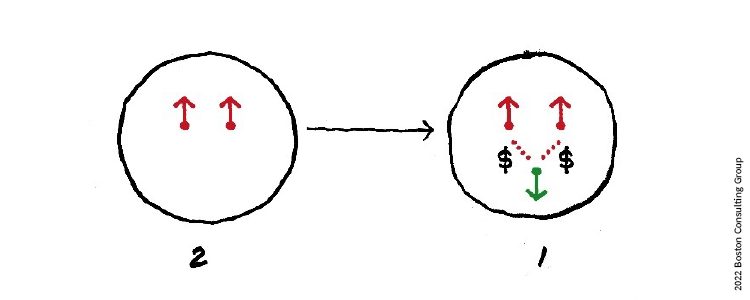
Carbon offsets that are allowed to sit simultaneously on multiple entities’ balance sheets can inflate apparent impact.
The singular ownership of carbon offset purchase is already a significant issue.[4]https://www.propublica.org/article/the-climate-solution-actually-adding-millions-of-tons-of-co2-into-the-atmosphere When a company buys an offset in the Amazon rainforest how can they be sure that same offset isn’t sold to someone else concurrently? Such lack of verifiability makes it difficult to buy carbon offsets with confidence, particularly for smaller companies and individuals who also have an ambition and need to become net-zero.
Limitation 4: Delayed impact
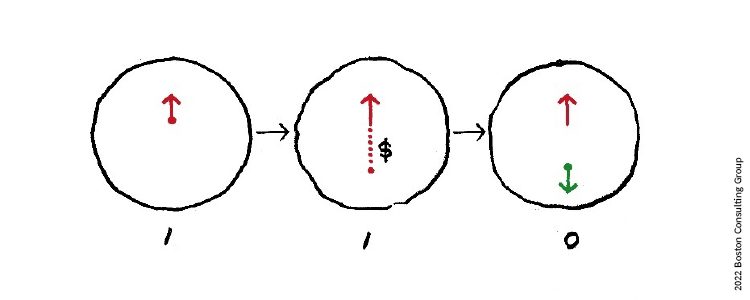
Nature based offsets do not have an immediate effect — afforestation schemes take time to realize their full effect. The resulting short-term imbalance can lead to further climate deterioration.
Limitation 5: Postponement of decarbonization

Carbon offsets can encourage the postponement of decarbonization, best clarified by asking the counterfactual — what action would have to take place instead, if buying carbon offsets weren’t an option? Creating an “easy out solution” in the form of a carbon offset may distract or delay companies from the hard but more meaningful and permanent work of reducing their carbon emissions.
History suggests that complex social mobilization efforts often require a high and shared sense of urgency, as well as a mutual feeling of interdependence. The promise of net-zero at a distant future date may result in increased complacency and delayed transformative actions by companies (changes in business models) and individuals (changes in consumption or lifestyle patterns) — ultimately preventing us from reaching net-zero in time to avert catastrophic climate impact.
Limitation 6: Permanence
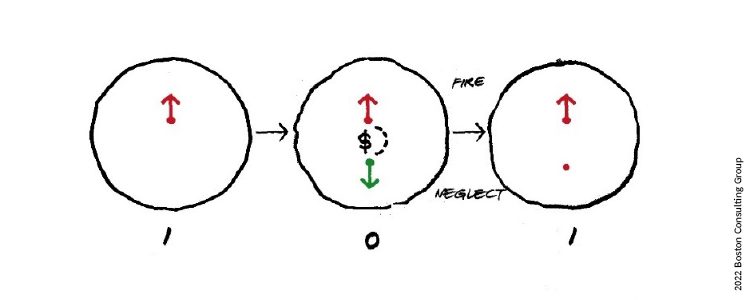
Carbon offsets are bought and debited in the present, with the understanding that the resource will be maintained into the future. When a company emits a greenhouse gas it does so with 100% certainty. However, a carbon offset requires ongoing stewardship and can therefore be considered to have an increasing discount rate over time. For example, an acre of forest that is sold this year as a carbon offset may be destroyed next year due to neglect, fire, or even willful gaming on the part of the seller.
Limitation 7: Non-additivity
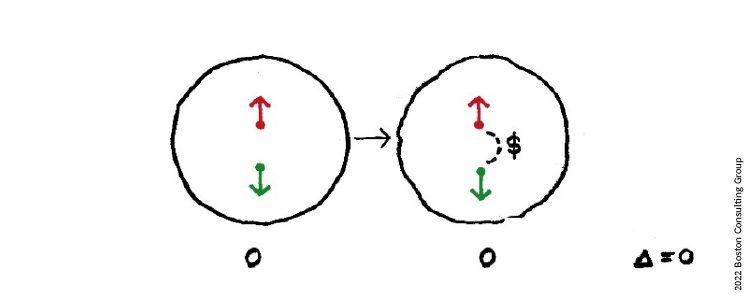
If buying a carbon offset leads to a reduction of greenhouse gas emission that would have happened independently, then the carbon offset is non-additive. For example, a company can pay someone to build a wind farm that will displace a coal power plant and provide cleaner energy. However, if that wind farm was going to be built either way, the net effect has been to improve the business case for the wind farm, but not to create an additive offset.
Limitation 8: Leakage / Coverage
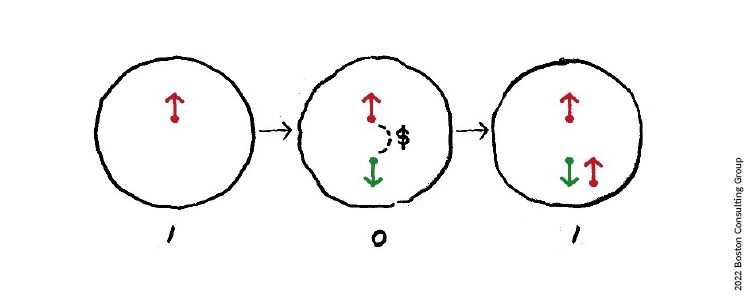
Leakage occurs when efforts to reduce emissions in one place shift emissions to another place where they are uncontrolled or uncounted. For example, “protecting” an acre of forest in Brazil from logging through a carbon offset program may result in the logging of an acre of forest in Borneo — particularly if there has been no reduction in demand for forest lumber and furthermore the price for forest lumber has increased due to scarcity driven by carbon offset programs. If the net-zero pact does not cover all regions and participants, then real progress will be reduced and apparent progress will be exaggerated.
Limitation 9: Economic viability (inflation of offset prices)

Net-Zero pledges that depend on the use of compensation mechanisms like carbon offsets, are effectively commitments to buy offsets in the future at an unspecified price. The finite nature of verifiable, protectable carbon offsets paired with a strongly increasing demand for carbon offsets between 2030 and 2050 when companies near their pledge dates, will inevitably drive up the price of offsets. This could make planned carbon offsets economically unrealistic and thus result in pledges which cannot realistically be fulfilled.
Limitation 10: Voluntarism
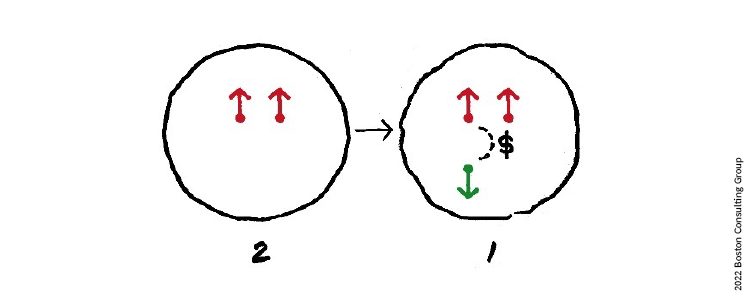
The voluntary nature of the Net-Zero system will inevitably result in limits to emitter coverage. The biggest emitters with the most intractable transformation challenges will have the least incentive to commit. Without the arrival of highly disruptive competitors or regulation, present incentives to take significant action may be insufficient. Given the necessity that all entities become net-zero for the planet to be net-zero, the voluntary scheme will not be able to attain its ultimate goal of a net-zero planet.
Limitation 11: Moral hazard
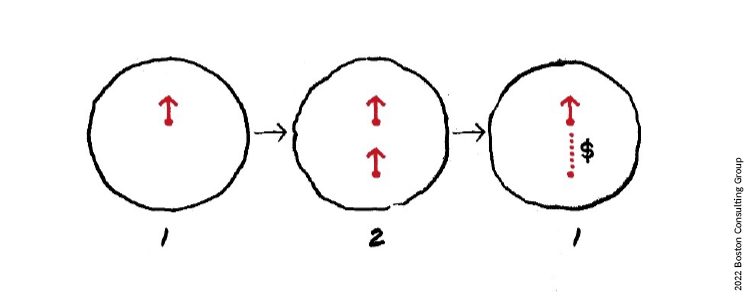
The majority of carbon offset solutions available today involve paying someone to not take an action — such as paying someone to not log a virgin forest. Such financial incentives may encourage individuals to project an action (e.g. log a forest) they had previously not intended to take. This is of particular concern in developing countries where many of these natural resources sold as carbon offsets reside and alternative economic opportunities are limited, creating strong incentives for this deception to occur.
Limitation 12: Inequity in economic development

Developed countries emit a larger share of emissions due to their higher level of industrialization and consumption. Developing countries by contrast, could be frozen at current relative income levels if economic development is obstructed by incentives that overly bias the use of a country’s resources for providing offsets beyond its borders.
Limitation 13: Over-simplification (reduction of sustainability to carbon neutrality)
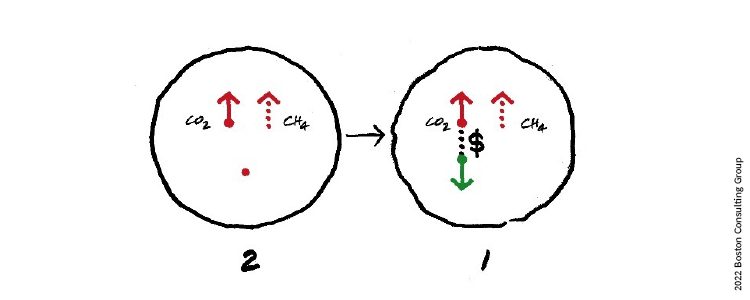
Methane and nitrous oxide have ~30 and ~300 times the heat trapping effect of carbon dioxide respectively. Yet, many climate change pledges today focus exclusively on CO2 reduction using words like carbon zero and carbon neutral. This over-simplification of sustainability efforts to carbon neutrality undermines the ultimate goal of climate sustainability. This has created meaningful confusion about the scope of announced net-zero pledges, impeding individual net-zero pledges summing to planetary net-zero.
Limitation 14: Over-simplification (reduction of sustainability to decarbonization)
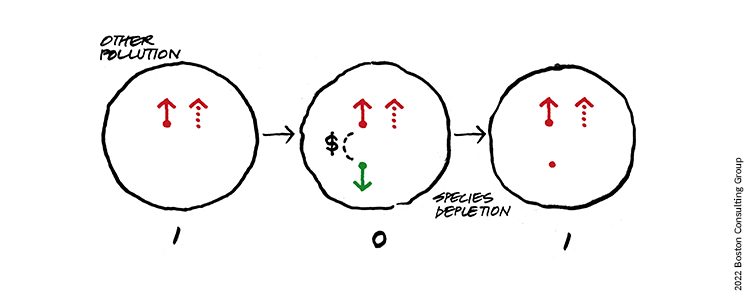
The mobilizing of attention and resources towards net-zero pledges is something to be celebrated. However, attending only to narrowly defined carbon reduction goals could be self-defeating. For example, if non-GHG pollutants and other activities which lead to species depletion and the degradation of nature are not addressed, then the natural buffering capacity of the planet could be reduced, undermining carbon offsets and the ultimate goal of climate sustainability
Limitation 15: A goal without a path
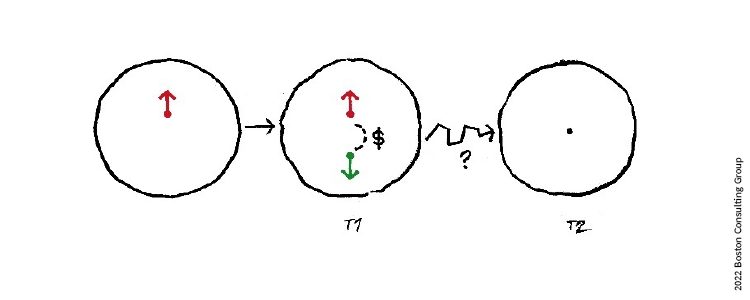
Net-zero sets a goal, but not the path to reach it. For simple problems, such an approach may be effective in leaving room to innovate and try new solutions. However, the complex, unprecedented, inter-dependent and transformative change required to reach net-zero as a planet may not be achievable without a coordinated transition plan and the research, investments, policies and regulations to support it.
Elements of a better path forward
Given these limitations, how do we best leverage the momentum created by Net-Zero to evolve ever more robust solutions and pathways? We don’t pretend to have the complete answer, but some elements of a better path forwarding move beyond today’s Net-Zero approach, might include the following.
Enhancing Net-Zero:
Net-Zero provides a meaningful system of accounting and accountability and can be enhanced to remove some of these limitations. While definitions are continually being improved, sufficient attention also needs to be given to how these are applied in practice.
- Establish consistent definitions / standards: Net-Zero emission targets must account for all GHG emissions of companies and countries, in all aspects of operations. While methane and nitrous oxide remain harder to address, their high impact necessitates that they are included. This should address the limitations of definitional consistency and completeness.
- Create mechanisms of verification: Audited inventories of carbon offset resources can be established to provide a means of verification, to eliminate double counting, to monitor permanence and to help project the inevitable inflation in offset prices.
- Split out the reporting of and accelerate decarbonization: Carbon offsets cannot be allowed to substitute for or postpone addressing emissions, the root cause of climate change. Companies and countries should be required to report separately for emissions reductions and offsets. This should help address the problem of postponement.
- Accelerate commitments: Net-zero pledges in the distant future must be coupled with interim commitments. These are essential to increasing the sense of urgency, accelerating near-term action, and providing the ability to monitor progress and course correct towards the ultimate target, which will help overcome the limitations of delay and postponement of true reduction.
Moving beyond Net-Zero:
In addition to enhancing Net-Zero mechanisms, we must pursue a more multi-dimensional view of sustainability and put in place the financial, operational, technological, behavioral, and cultural support to enable the transformative action necessary to achieve climate sustainability for the planet.
- Multidimensional view of sustainability: Consider sustainability beyond the single dimension of carbon emissions to include all relevant factors, including other GHG emissions, species diversity, air and water quality, and nature preservation. This multi-dimensionality can help to overcome the risks of over-simplification.
- Develop a behavioral strategy: While there is significant work underway to improve accounting, more work is required to understand the behavioral economics of decarbonization, so that the right nudges, sticks, and kicks can be used to direct human action in the desired direction and address the limitations of moral hazard and non-additivity. In particular, we need to harness the power of future regret to mobilize present action.
- Ensure sustainable economics for decarbonization and offsets. Plan for carbon economics to shift over time as demand for offsets and sustainable inputs create new scarcities and price inflation, to address the limitation of economic viability.
- Develop transition paths: Reaching net-zero will necessarily require large-scale societal change. What are the major shifts economically, technologically, and societally that must be made? How do we act on and sequence these major shifts collectively, to provide the foundation for individual agents to meet their net-zero targets? This should address the limitation of goals without paths.
- Accelerate innovation: Decarbonization will require more, cheaper and better solutions than we have today. We do not currently have the approaches to meet our commitments and we must accelerate the rate of discovery, scaling, and deployment of technological and nature-based innovations through increased funding, private & public partnership, and international cooperation.
- Regulatory and fiscal policy: Regulatory and fiscal policy should be put in place to make corporate and societal transformation a viable path. Like a ball rolled down the street, the regulatory policy forms the curb — channeling the direction of the ball while, the fiscal policy determines the decline of the street — providing the force to overcome friction and accelerating the path of the ball to its desired direction. Together, regulations and financial policy can help overcome the problems of volunteerism, leakage, and inequity of economic development to ensure that planetary net-zero happens at expeditiously, ubiquitously, and equitably.



